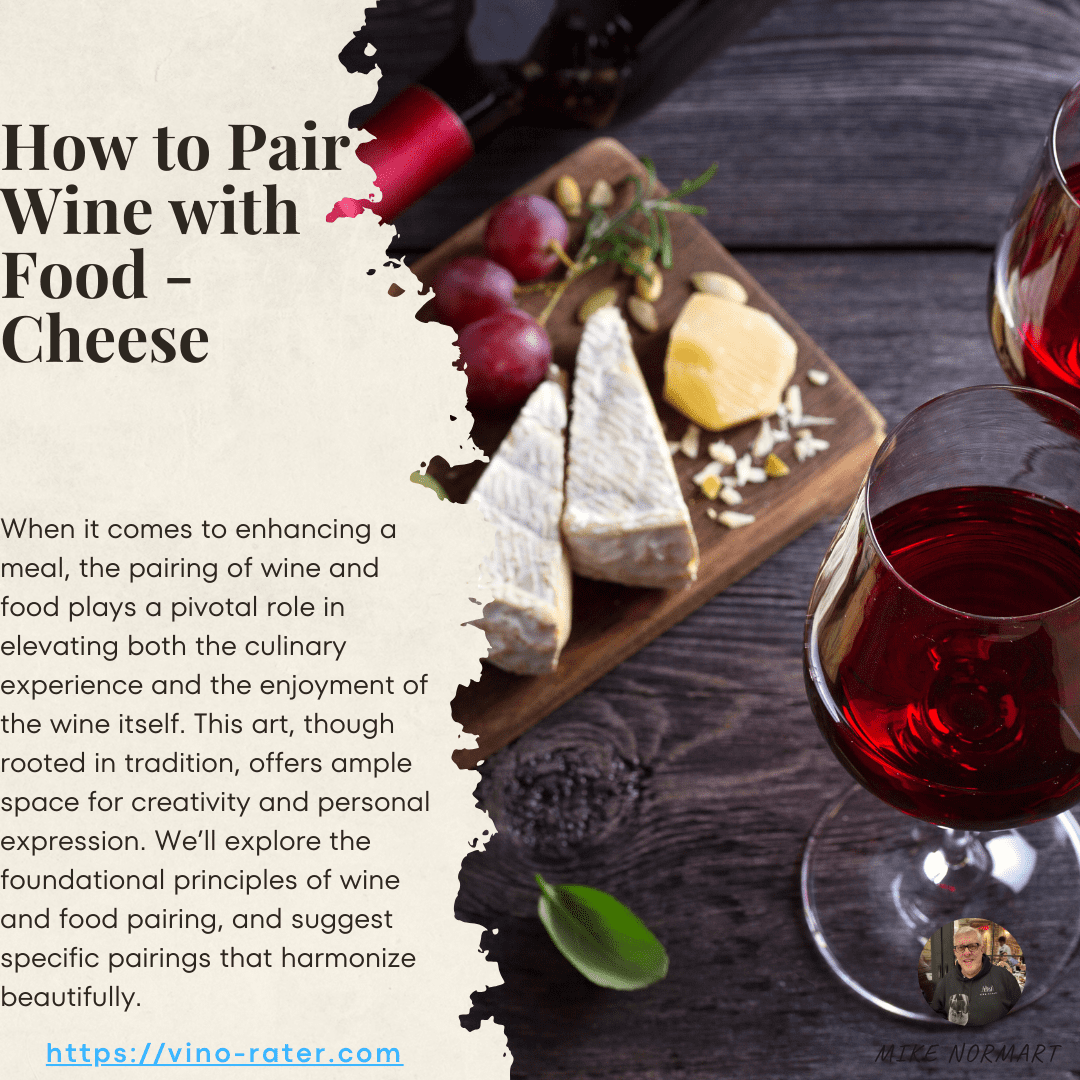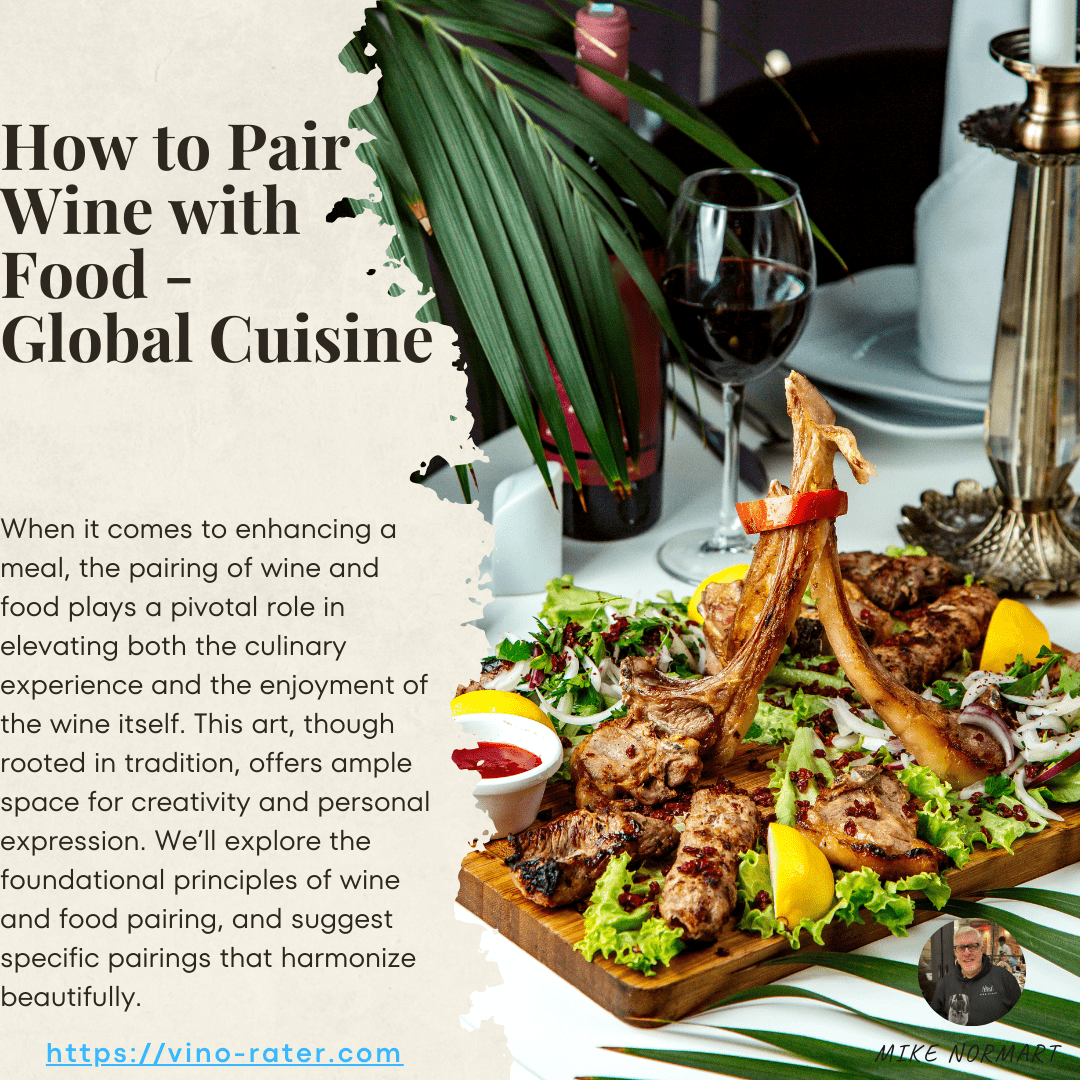How to Pair Wine with Food – Seafood
H o w t o P a i r W i n e w i t h F o o d – S e a f o o d
How to Pair Wine with Food – Seafood
When it comes to enhancing a meal, the pairing of wine and food plays a pivotal role in elevating both the culinary experience and the enjoyment of the wine itself. This art, though rooted in tradition, offers ample space for creativity and personal expression. For this Master list, first we will explore the foundational principles of wine and food pairing. Then we’ll follow up with a list of Wine and food pairings for Seafood and do Meats, Cheeses, Desserts and Global Cuisines in other segments.
Foundational Principles of Wine and Food Pairing
Pairing wine with food is not just a matter of taste—it’s about balance, contrast, and enhancement. Here are some key principles to consider:
- Balance in Weight and Intensity: The intensity of both the wine and the dish should match to avoid one overpowering the other. Lighter dishes, like a delicate fish or salad, pair well with lighter wines, such as Pinot Grigio or Sauvignon Blanc, while richer, heartier dishes, such as a beef stew, call for more full-bodied wines, like Cabernet Sauvignon or Syrah.
- Complementary Flavors: Similar flavors in both wine and food can enhance each other. A buttery Chardonnay complements dishes with creamy sauces, while a wine with citrus notes might pair well with a lemon-accented dish.
- Contrasting Flavors: Opposing flavors can create a pleasant balance. A crisp, acidic wine like Riesling can cut through the richness of a fatty dish, refreshing the palate. Similarly, the sweetness of a late harvest wine or Port contrasts beautifully with the saltiness of blue cheese or savory dishes.
- Tannins and Fat: Tannins in red wine interact wonderfully with fat in meat, as the tannins cut through the richness of the dish, cleansing the palate. This is why a tannic wine like Cabernet Sauvignon is a classic pairing for fatty cuts of beef.
- Acidity: Wines with high acidity can be very food-friendly. Acidity in wine acts similarly to how lemon juice can brighten a dish, highlighting flavors and cutting through fat. High-acid wines, like Sauvignon Blanc or Chablis, pair well with fatty foods or dishes with a heavy cream base.
- Spice and Alcohol: Spicy foods can be heightened by alcohol, so it’s generally best to pair spicy dishes with wines that have a lower alcohol content and perhaps a touch of sweetness, like an off-dry Gewürztraminer or Riesling, to temper the heat.
- Regional Pairings: When in doubt, pairing wine and food from the same region is a reliable guide. Regional food and wines have often evolved together over time and naturally complement each other, such as Italian Chianti with pasta in a tomato-based sauce or Spanish Rioja with Iberico ham.
- Sweetness: The wine should be at least as sweet as the dish it’s paired with. Desserts and sweet dishes can make dry wines taste sour, so it’s preferable to choose a wine that has a bit of sweetness for sweet dishes, like Moscato d’Asti with fruit desserts or Sauternes with foie gras.
By considering these principles, you can make informed decisions that enhance both the wine and the meal, leading to a more enjoyable dining experience.
Master Wine & Food Pairing List
First I Identified the top 25 wines in the world that are somewhat easy to find for Pairing with foods I am about to list. I also added red blends, Rose Champagne and dessert wines which can have different varietals, so I listed them towards the bottom.
- Cabernet Sauvignon
- Chardonnay
- Merlot
- Pinot Noir
- Sauvignon Blanc
- Syrah/Shiraz
- Zinfandel
- Riesling (Dry to Sweet)
- Malbec
- Pinot Grigio
- Sangiovese
- Cabernet Franc
- Tempranillo
- Moscato
- Grenache
- Gewürztraminer
- Gamay
- Chenin Blanc
- Viognier
- Mourvèdre
- Montepulciano
- Red Blend
- Sparkling Wine/Champagne
- Rosé
- Dessert Wines
If you have a favorite varietal not listed here, feel free to drop me a note and I can help you pair the wine with a particular food.
Seafood Pairings
Bouillabaisse:
- Chardonnay: The full body and creamy texture of Chardonnay complement the richness of bouillabaisse.
- Sauvignon Blanc: The high acidity and citrus notes of Sauvignon Blanc pair well with bouillabaisse.
- Riesling (Dry): The minerality and high acidity of Dry Riesling enhance the flavors of bouillabaisse.
Fish Stew:
- Chardonnay: The full body and creamy texture of Chardonnay complement the richness of fish stew.
- Pinot Grigio: The light body and subtle fruit flavors of Pinot Grigio pair well with fish stew.
- Sauvignon Blanc: The high acidity of Sauvignon Blanc balances the flavors in fish stew.
Filet of Cod:
- Chardonnay: The full body and creamy texture of Chardonnay complement the flaky texture of filet of cod.
- Pinot Grigio: The light body and subtle fruit flavors of Pinot Grigio pair well with filet of cod.
- Sauvignon Blanc: The high acidity and citrus notes of Sauvignon Blanc enhance the flavor of filet of cod.
Mediterranean Sea Bass:
- Dry Riesling: The minerality and high acidity of Dry Riesling bring out the delicate flavor of Mediterranean Sea bass.
- Pinot Noir: The light body and earthy notes of Pinot Noir complement Mediterranean Sea bass
Red Snapper:
- Chardonnay: The full body and creamy texture of Chardonnay complement the mild flavor of red snapper.
Smoked Salmon:
- Champagne or Sparkling Wine: The crisp and bubbly nature of Champagne or sparkling wine can cut through the rich and fatty flavors of smoked salmon, creating a refreshing balance.
- Chardonnay: A full-bodied Chardonnay can provide a rich and creamy texture that complements the smoky flavors of the salmon.
- Sauvignon Blanc: The high acidity and refreshing citrus flavors of Sauvignon Blanc can provide a contrast to the smoky and savory flavors of smoked salmon.
- Riesling: A dry Riesling can provide a refreshing and zippy acidity that can balance the richness of smoked salmon.
- Pinot Noir: A light-bodied Pinot Noir with low tannins can complement the flavors of smoked salmon without overpowering them.
Salmon (Fruit Topping)
- Riesling (Dry to Sweet): A versatile wine that can pair with a wide range of dishes, Riesling’s high acidity and fruity notes can balance the sweetness of the fruit in your baked salmon dish.
- Gewürztraminer: With its floral and spicy aromas, Gewürztraminer can enhance the flavors of baked salmon with fruit, especially if you’re using tropical fruits like mango or pineapple.
- Viognier: This white wine’s fruity and floral notes can complement the sweetness of the fruit in your dish, while its medium to full body can stand up to the rich flavors of salmon.
- Pinot Noir: A lighter-bodied red wine like Pinot Noir can work well with baked salmon, especially if you’re serving it with a fruit salsa or chutney that has a bit of spice or acidity.
Sea Bass:
- Chardonnay: The full body and creamy texture of Chardonnay balance the rich, buttery flavor of sea bass.
- Sauvignon Blanc: The high acidity and citrus notes of Sauvignon Blanc complement the delicate flavor of sea bass.
- Pinot Grigio: The light body and subtle fruit flavors of Pinot Grigio pair well with sea bass.
Sushi/Sashimi:
- Riesling (Dry to Off-Dry): A versatile wine that can balance the flavors of sushi/sashimi, Riesling’s high acidity and fruity notes can complement the wide range of sushi flavors.
- Pinot Noir: A light-bodied Pinot Noir with low tannins can complement the savory flavors of sushi/sashimi with richer fish like tuna or eel.
- Chardonnay: A full-bodied Chardonnay can work well with sushi rolls that feature creamy ingredients like avocado or mayo.
- Sparkling Wine or Champagne: Bubbly wines like Champagne or Prosecco can provide a refreshing contrast to the rich flavors of sushi.
- Sauvignon Blanc: The crisp acidity and green flavors of Sauvignon Blanc can enhance the flavors of sashimi, especially when paired with fish like salmon or sea bass.
Trout:
- Pinot Noir: The light body and earthy notes of Pinot Noir complement the delicate flavor of trout.
- Dry Riesling: The high acidity and minerality of Dry Riesling balance the richness of trout.
- Sauvignon Blanc: The citrus and herbaceous notes of Sauvignon Blanc enhance the freshness of trout.
White Fish:
- Pinot Grigio: The light body and subtle fruit flavors of Pinot Grigio complement the delicate flavor of white fish.
- Chardonnay: The full body and creamy texture of Chardonnay balance the richness of white fish.
- Dry Riesling: The high acidity and minerality of Dry Riesling enhance the flavor of white fish.
Shellfish:
King Crab Legs:
- Chardonnay: The full body and creamy texture of Chardonnay complement the rich and sweet flavor of king crab legs.
- Sauvignon Blanc: The high acidity of Sauvignon Blanc balances the richness of king crab legs.
- Riesling (Dry): The minerality and high acidity of Dry Riesling enhance the delicate flavor of king crab legs.
Lobster:
- Chardonnay: The full body and creamy texture of Chardonnay complement the rich and buttery flavor of lobster.
- Riesling: The slight sweetness and high acidity of Riesling complement the rich and sweet flavor of lobster, while the minerality in Riesling can also enhance the flavor of lobster. Off-dry Riesling can be an excellent pairing due to its balance of sweetness and acidity.
Raw Oysters:
- Sauvignon Blanc: The high acidity and citrus notes of Sauvignon Blanc complement the briny and fresh flavor of raw oysters.
Steamed Clams/Mussels:
- Pinot Grigio: The light body and subtle fruit flavors of Pinot Grigio complement the light and briny flavor of steamed clams/mussels.
- Sauvignon Blanc: The high acidity and citrus notes of Sauvignon Blanc pair well with steamed clams/mussels.
- Riesling (Dry): The minerality and high acidity of Dry Riesling enhance the flavor of steamed clams/mussels.


Grilled Filet Mignon steak

How to Pair Wine with Food – Cheese

